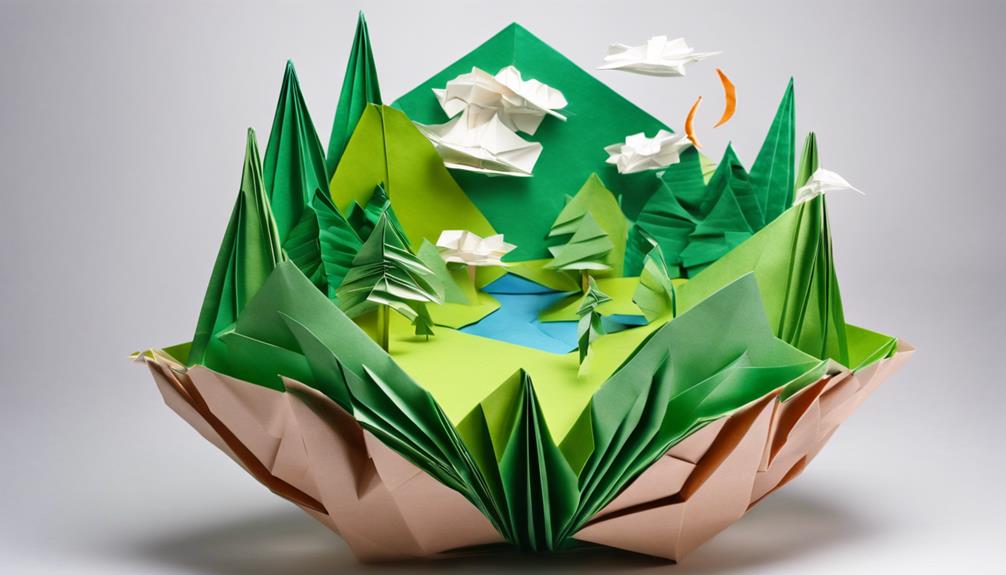To design a low-water landscape for drought conditions, choose native, drought-tolerant plants that thrive with minimal irrigation. Use efficient watering methods like drip emitters and install smart controllers to adjust watering based on weather. Group plants with similar water needs and incorporate mulch to retain soil moisture. Reduce turf areas and add rocks or native groundcovers for visual appeal. Maintain these strategies, and you’ll create a sustainable landscape that conserves water even during dry spells. Continue exploring for more tips.
Key Takeaways
- Choose native, drought-tolerant plants adapted to local climate and soil conditions.
- Implement efficient irrigation methods like drip emitters and smart controllers to reduce water waste.
- Group plants with similar water needs (hydrozoning) to optimize watering efficiency.
- Incorporate mulching and natural features to retain soil moisture and minimize evaporation.
- Minimize turf areas and use drought-resistant grasses and groundcovers to lower water requirements.

Are you looking for ways to create a beautiful yard while conserving water? Designing a low-water landscape is a smart move, especially during drought conditions. One of the most effective strategies is choosing native plants. These plants are naturally adapted to your region’s climate and soil, meaning they require less water, fertilizer, and maintenance than non-native species. Incorporating native plants into your yard not only helps conserve water but also supports local ecosystems by providing habitat for native wildlife. When selecting plants, focus on varieties that thrive in your specific environment, ensuring they’ll flourish with minimal intervention.
Another key aspect is improving irrigation efficiency. Traditional watering methods often waste water through runoff, evaporation, or uneven distribution. Upgrading to efficient irrigation systems, like drip emitters or soaker hoses, delivers water directly to the plant roots where it’s needed most. This targeted approach reduces waste and ensures your plants get consistent moisture without overwatering. Setting up a smart irrigation controller that adjusts watering schedules based on weather conditions can further optimize water use. For example, it can cut back watering during rainy periods and increase it during dry spells, aligning water application precisely with your landscape’s needs.
Designing with native plants also allows you to create visually appealing landscapes that require less maintenance. Grouping plants with similar water needs together, known as hydrozoning, maximizes irrigation efficiency and minimizes waste. Mulching around your plants helps retain soil moisture, suppress weeds, and keep roots cool during hot weather. When planning your yard, think about incorporating drought-tolerant grasses, succulents, and shrubs that can withstand dry conditions while adding texture and color to your landscape.
It’s also important to regard the layout of your yard. A well-planned design can reduce the overall area that needs watering. Use natural features like rocks, mulch, and native groundcovers to fill in spaces instead of turf grass, which typically requires more water. Creating shaded areas with trees not only provides relief from the sun but also reduces water loss through evaporation. This strategic placement of plants and features can make your low-water landscape more sustainable and resilient during droughts.
Frequently Asked Questions
How Do I Select Native Plants for Drought-Tolerant Gardens?
You should focus on native plant selection by choosing drought-resistant species that thrive in your area’s climate. Look for plants adapted to dry conditions, such as succulents, native grasses, and flowering perennials. Consult local nurseries or native plant guides to identify species that require minimal water and are well-suited to your soil type. This guarantees a sustainable, low-maintenance garden that conserves water and supports local ecosystems.
What Soil Amendments Improve Water Retention in Dry Climates?
To improve water retention in dry climates, you should apply mulch around your plants to reduce evaporation and keep soil moist. Incorporate organic compost into your soil to enhance its ability to hold water and improve overall health. These amendments work together to create a more drought-resistant landscape, helping your plants thrive with less water. Regularly replenish mulch and compost for best results.
Can I Incorporate Traditional Lawn Areas Into Low-Water Landscapes?
Yes, you can incorporate traditional lawn areas into low-water landscapes by opting for lawn replacement options and turf alternatives. Consider replacing high-water-demand grass with drought-tolerant choices like xeriscape grass or artificial turf. These turf alternatives reduce water use while maintaining a lush look. You might also create designated lawn zones that use native plants, blending functional green spaces with water-efficient landscaping for a sustainable, attractive yard.
What Irrigation Systems Are Most Efficient for Drought-Prone Areas?
You should choose drip irrigation systems paired with smart controllers for maximum efficiency in drought-prone areas. Drip irrigation delivers water directly to plant roots, reducing waste, while smart controllers adjust watering schedules based on weather data, ensuring ideal use of water resources. This combination minimizes evaporation and runoff, helping your landscape stay healthy with less water. Installing these systems is a smart step toward creating a sustainable, drought-resistant landscape.
How Do I Maintain Aesthetic Appeal While Conserving Water?
You can maintain aesthetic appeal while conserving water by using artistic rock arrangements and decorative mulch patterns that add visual interest without extra watering. Choose drought-tolerant plants with unique textures and colors to create focal points. Regularly prune and group plants to reduce water needs. Incorporate native species that thrive in your climate, ensuring your landscape remains attractive and sustainable, even during droughts.
Conclusion
By transforming your yard into a low-water landscape, you’re not just saving a few drops—you’re revolutionizing your entire environment! Imagine turning your home into a fortress of drought resilience, where every drop of water is treasured like liquid gold. With these simple steps, you’ll create a stunning oasis that defies the drought, making your garden a hero in the fight against water scarcity. Get ready to lead the charge and make a legendary impact!










